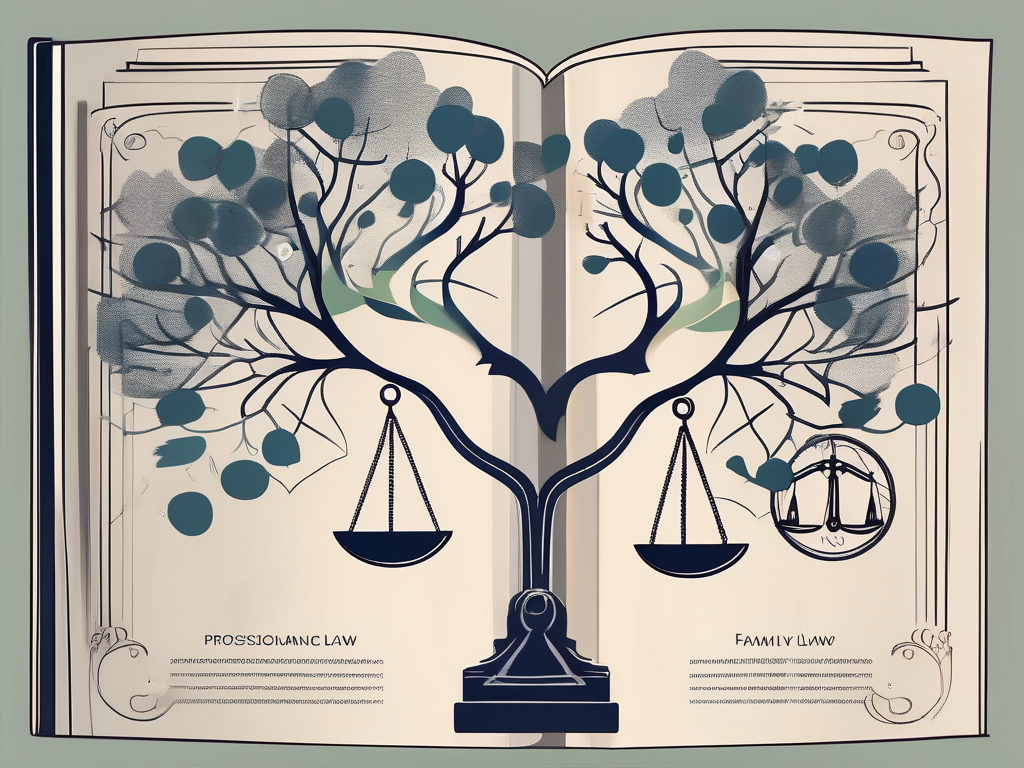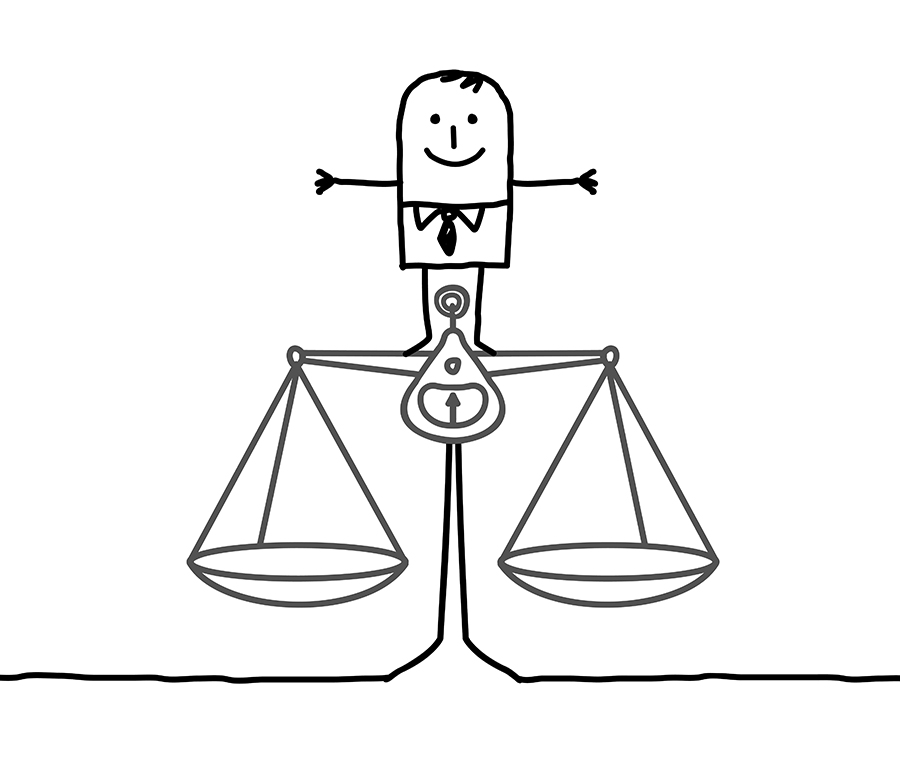In the contemporary world, Family Court Problems are becoming increasingly evident, particularly in Ontario, Canada. Families equipped with the necessary resources and skills often sidestep the family court system, handling their family law issues independently, with or without professional legal counsel. However, those lacking negotiation abilities or the capacity for emotional recovery are left to grapple with the court system, which can often intensify their resistance to change.
This is especially true for families confronted with child custody issues such as personality disorders, domestic violence, or emotional abuse. These problems are becoming more common in our rapidly evolving society. The confrontational nature of the court system can escalate their negative behaviours and fails to tackle the root of their issues, such as those involving child funding responsibilities. Thus, addressing Family Court Problems is an urgent need in our society.
The Role of Family Systems Theory in Contributing to Family Court Problems
Family systems theory, although not widely discussed today, can provide valuable insights for professionals and parents dealing with separation and divorce. This article will delve into the basics of family systems theory, its application in divorce proceedings, and how it can aid families navigating through family law cases. It will also highlight why the adversarial process of family courts, including the Ontario Court of Justice, was effective in managing child custody and family conflicts in the past but is ill-suited for today’s high-conflict family systems. In contrast, skillful family mediation and other non-adversarial processes can be successful.
Family systems theory likens families to the solar system, where each member influences every other member, similar to how gravity pulls planets towards each other. Family systems share several common characteristics:
- Powerful Support: Family systems are a robust source of support. They are predictable, allowing members to focus on their tasks and respond to each other automatically. Family systems have built houses, companies, and nations. For instance, most successful Olympic athletes, musicians, and actors had strong family support from a very young age. The family system organized itself around their success.
- Stability Seekers: A family system develops standard ways of doing things, with the whole family participating in enforcing its code of conduct, values, and roles. Even young children learn the rules of the family system and follow them. Family secrets are kept to maintain balance. The more dysfunctional the family, the more rigid the roles to keep it stable, the more extreme behaviour, and the more secrets to keep it as stable as possible.
- Role Creators: In every family system, everyone develops a role. In traditional family systems, the roles have been very clear-cut. In modern times, roles are more flexible and may overlap, as family members interact with the larger society. This can cause instability, leading to more arguments over roles or members leaving the family system.
- Part of Larger Social Systems: Family systems are part of larger extended families, communities, regional cultures, nations, and world social systems. The values, rules, and behaviours of these larger social systems strongly influence smaller family social systems.
- Resistance to Change: Family systems resist change, maintaining the status quo at all costs. They don’t let people change their behaviour very much. They are always aiming for stability, like a ship at sea trying to balance itself in a storm.
Family Court Problems in the Face of Evolving Family Structures and Social Systems
Since about 1970, there have been dramatic changes in our larger social systems and within families around the world. We are shifting from fairly rigid family structures to quite flexible family structures. Freedom to divorce, gay marriage, multi-racial households, children born to unmarried parents, people living alone, and many other changes are unpredictable effects on the future of family systems and larger social systems.
Regarding the separation and divorce proceedings, the relationship of Family Court to family systems has changed dramatically in the past few decades. Divorce laws gave social permission for people to get divorced at will, simply due to “irreconcilable differences.” This ease of disruption impacts the whole family system. Rather than having skills to cope with these significant changes, many families instinctively resist these changes to stabilize the family system.
The Evolution of Family Court’s Role
From approximately the 1970s to the 1990s, family courts, including the Ontario Court of Justice, have been setting divorce policies that define these changes. Parenting is supposed to include “significant time” with both parents. Both parents are supposed to earn an income, and child support and spousal support are supposed to adjust for differences in earning ability. Former spouses are free to engage in sexual activity of their own choosing. “Get over it” is a common expression heard in family courts when one party resists the changes of the other.
Starting around the 1990s, surprising changes occurred. Methods such as mediation and family lawyer negotiation took over the role of courts in family decision-making, including decisions related to child custody. Lawyers and family mediators educated the parties about the laws that had been established over the prior 20 years, and the parties started avoiding court altogether.
However, the remaining cases in family courts started to focus on family violence, restraining orders, child alienation, and supervised visitation. These were the families who were unable to make the shift to the “new world family order.” Much of the family violence was perpetrated by men who saw themselves in the traditional role of being “head of the family.” Their violence (often reactive and unplanned) was aimed at keeping their wives in the family and under their control. Much of the alienation and false allegations were perpetrated by women who saw themselves in the traditional role of “in charge of the children.” Their efforts (often unconscious) seemed to be to resist the changes to equal roles in shared parenting.
Can Non-Confrontational Approaches Solve Family Court Problems?
Non-adversarial methods are needed for today’s family court cases, especially when financial support disputes are prevalent. That is why methods such as mediation, collaborative divorce, family lawyers assisting in negotiations, and judicial dispute resolution are the way of the future – especially for these family systems in pain and resistant to the changes of the larger society. This is why skills training is needed for the whole family to help the whole family system go through these changes and into new forms.
Family systems – especially dysfunctional family systems – will resist family courts until we learn these lessons. This is not to say that there is not a role for family courts – it’s a different role which needs new knowledge and skills for understanding and managing dysfunctional family systems and their common mental health issues today.
I explained some of the basics of family systems: how they are powerful sources of support, how they seek stability above all else, how family roles are created, how they enforce behavior and secrets, how they are influenced by larger social systems (extended family members and society), and how they resist change – even positive change.
More Problems with Family Court
I explain how family systems adapt when there is a mental illness in the family, and how the family courts misunderstand the importance of these adaptations. Since courts – and most people involved with courts – focus on individual rights and individual behavior, they tend to misunderstand the powerful role that family systems play in past and future behavior.
Adapting to Illness: The Role of the Family System
Family systems adapt to illness: When there is an illness in the family, the family system organizes itself around the illness, potentially impacting financial obligations. Everyone else’s needs tend to defer, so that the ill family member can get treated and the family system can survive the illness. For example, with a child’s physical illness, the parents focus their energies (and their arguments) around dealing with the child. Siblings’ needs are secondary to the child with the illness.
Family systems adapt to mental illness: If a family member has severe depression, alcoholism, schizophrenia, personality disorder, or another mental disorder, the family adapts in predictable ways. The children adapt so that they can survive. If the disordered member is a parent, then the children watch out to see how to stay safe. In a two-parent family, with a depressed parent or parent with schizophrenia, a child usually leans on the healthier parent to survive. They often avoid and look down on the dysfunctional parent – sometimes known as the “identified patient” – and form an alliance with the healthier parent. But if they are around the disordered parent a lot, their children work hard at strengthening the disordered parent with encouraging words, a strong alliance, and sacrificing their own needs.
The Dual Personas of Dysfunctional Parents
Dysfunctional parents may have “dual personas:” Drug addictions (including alcoholism) and personality disorders have “dual personas:” one public and one private. The public persona can be very attractive, smart, loving, and kind. Other times they can be deceptive, manipulative, cruel, and physically abusive. Children in these family systems often become confused and “hyper-vigilant” – so they know when to steer clear of that parent to avoid the “private” abuse, manipulation, or other surprise behavior. Such children often feel crazy because they are told that the parent’s dysfunctional behavior is actually appropriate or necessary, and told that functional behavior is inappropriate and harmful to them. One or both parents may justify the dysfunctional parent’s behavior or tell the child to ignore it.
Other adults (grandparents, family friends, professionals) may also feel crazy around this dual persona. In some cases, they learn to please the dysfunctional parent and focus their energies on calming that parent because the other parent is fairly healthy and secure already. Children will do anything to survive, including lying, stealing, or testifying for or against that parent if necessary. They will support the family system and will closely follow its power structure. Their number one goal is maintaining the stability of the family system, and they are the most invested in keeping the peace because they are the most dependent on it.
The Power Dynamics in Dysfunctional Families
Unfortunately, in many families with an addiction or a personality disorder, the most powerful person is the dysfunctional parent – such as in a family plagued by domestic violence. Unless one spends a while with the whole family system, it is often not obvious where the power really lies. It may even be someone who appears outside the family power structure who is really the power behind the family, such as a grandmother or an uncle. That person may protect the secrets of the dysfunctional family member and excuse their behavior. Dysfunctional families are often filled with “enablers” who help keep the dysfunctional person stuck in their self-defeating behavior because it serves to maintain the status quo. They are also filled with “negative advocates” who defend the dysfunctional person’s behavior to employers, neighbors, and the court system. The family adapts and defends the family system.
Joining the Family System
In the 1980s, family therapists realized that when they worked with a family, they “joined” the family system. It was inevitable. They learned to “ally” with the most powerful member(s) of the family; otherwise, they quickly became irrelevant. Families have a very powerful influence on everyone who tries to join them. They support those “outsiders” who fit in and resist those who threaten or try to change them.
The Role of Family Courts in Divorce
When people got divorced, prior to the 1970s, one person (usually the father) often left the family system. That’s just the way it was. It was hard to tell whether they abandoned the family or the family pushed them out. In dysfunctional families, the story of the absent parent became the focus of the family. Discussions (or complete silence) about this parent helped maintain the family system – and distressed the children, who had no mechanism to heal the loss.
“The elephant in the room,” who no one mentioned, has been a common expression that originated with alcoholism. Divorce has had similar dynamics. In Family Court, most people don’t even know that an elephant in the room is not being talked about. Family secrets are a big part of dysfunctional families. “Outsiders” will never know. While many stories may be told about each other in the family, the important stories are often kept firmly under wraps.
Current Issues in the Family Court System
Now, 40 years after “no-fault” divorce laws established modern divorce standards (generally equal division of property, significant sharing of the children, and parental support of a lower earning parent by a higher earning parent), most families don’t even need family court to make their decisions. Generally healthy family systems find ways of divorcing that do not totally challenge their family systems but instead maintain a less-intimate form of the familiar dynamics, with child maintenance ensuring the children’s needs are prioritized. Parents communicate, children see them both, and conflicts are managed through minimal contact or active problem-solving.
Those who are left in the Family Courts today are primarily dysfunctional family systems and a few cases of unique new issues that need courts to make a policy decision. Most court decisions are about bad behavior, how to evaluate it, and how to manage it. Discovering lies, hidden assets and income, and enforcing court orders have become the main issues of today. Restraining orders have become a huge part of the court’s work, as dysfunctional behavior and lack of self-restraint continue to grow in society.
Impact of Courts on Family Systems
Yet, because of the “dual personas” in dysfunctional families, courts have very little idea who and what they are dealing with. The “search for the truth” is much more complicated with people who are actively trying to hide the truth in family systems that have years of experience in keeping family secrets. One of the myths of family court is that victims of abuse will simply stand up and tell the truth so that courts can protect them. Most victims know that they cannot have any confidence that they will be protected
* * *
This is a guest post by Bill Eddy a family lawyer, family mediator and clinical social worker, and the President of the High Conflict Institute. He is the author of several books including The Future of Family Court: Structure, Skills and Less StressandSplitting: Protecting Yourself While Divorcing Someone with Borderline or Narcissistic Personality Disorder. He is also the developer of the New Ways for Familiesmethod of teaching skills to family systems (both parents and the children) andNew Ways for Mediationfor managing potentially high-conflict families. His website iswww.HighConflictInstitute.com.


